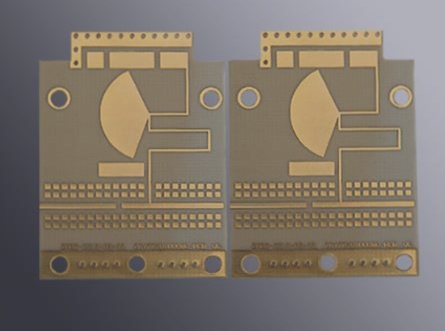The design and production of circuit boards involve specific processes and precautions. Copper coating is a critical step in PCB design, with significant technical considerations. To address how to handle this aspect of the design, experienced engineers have summarized several key practices:
1. Under high-frequency conditions, the distributed capacitance of the wiring on a printed circuit board becomes significant. When the length of the wiring exceeds 1/20 of the wavelength of the noise frequency, an antenna effect can occur, causing noise to be emitted through the wiring. A poorly grounded copper pour on the PCB can become a conduit for spreading noise. Therefore, in high-frequency circuits, merely connecting the ground wire to the ground is insufficient. Instead, it is essential to perforate the wiring with a spacing of less than λ/20 and establish a “good ground” connection with the ground plane of a multilayer board. Proper handling of the copper coating not only enhances current conduction but also provides effective interference shielding.
2. In copper coating, to achieve the desired results, several factors must be considered:

1. If the PCB has multiple grounds, such as SGND, AGND, and GND, use the primary “ground” as a reference for independent copper pours for digital and analog grounds based on the board’s layout. It is not necessary to separate the copper pours. Additionally, before pouring copper, first thicken the corresponding power connections (e.g., 5.0V, 3.3V) to form various deformed structures.
2. For single-point connections to different grounds, use 0-ohm resistors, magnetic beads, or inductors.
3. For copper pours near the crystal oscillator, which is a high-frequency emission source, pour copper around the crystal oscillator and ground its shell separately.
4. For the island (dead zone) problem, if it is too large, defining a ground via and adding it will not be costly.
5. At the start of PCB wiring, treat the ground wires uniformly. Route the ground wires properly, and avoid relying on vias to correct connections post-copper plating, as this approach is ineffective.
6. Avoid sharp corners on the board (<=180 degrees) as they can act as antennas from an electromagnetic perspective. This can impact other components; using rounded edges is recommended.
7. Avoid pouring copper in the open areas of the middle layer of multilayer boards, as it is challenging to achieve a reliable ground in such areas.
8. Ensure that metal components within the device, such as radiators and reinforcement strips, are properly grounded.
9. The heat dissipation metal block of the three-terminal regulator and the ground isolation strip near the crystal oscillator must be well grounded. Proper grounding of PCB copper areas is crucial as it reduces signal return paths and minimizes external electromagnetic interference.
1. Under high-frequency conditions, the distributed capacitance of the wiring on a printed circuit board becomes significant. When the length of the wiring exceeds 1/20 of the wavelength of the noise frequency, an antenna effect can occur, causing noise to be emitted through the wiring. A poorly grounded copper pour on the PCB can become a conduit for spreading noise. Therefore, in high-frequency circuits, merely connecting the ground wire to the ground is insufficient. Instead, it is essential to perforate the wiring with a spacing of less than λ/20 and establish a “good ground” connection with the ground plane of a multilayer board. Proper handling of the copper coating not only enhances current conduction but also provides effective interference shielding.
2. In copper coating, to achieve the desired results, several factors must be considered:

1. If the PCB has multiple grounds, such as SGND, AGND, and GND, use the primary “ground” as a reference for independent copper pours for digital and analog grounds based on the board’s layout. It is not necessary to separate the copper pours. Additionally, before pouring copper, first thicken the corresponding power connections (e.g., 5.0V, 3.3V) to form various deformed structures.
2. For single-point connections to different grounds, use 0-ohm resistors, magnetic beads, or inductors.
3. For copper pours near the crystal oscillator, which is a high-frequency emission source, pour copper around the crystal oscillator and ground its shell separately.
4. For the island (dead zone) problem, if it is too large, defining a ground via and adding it will not be costly.
5. At the start of PCB wiring, treat the ground wires uniformly. Route the ground wires properly, and avoid relying on vias to correct connections post-copper plating, as this approach is ineffective.
6. Avoid sharp corners on the board (<=180 degrees) as they can act as antennas from an electromagnetic perspective. This can impact other components; using rounded edges is recommended.
7. Avoid pouring copper in the open areas of the middle layer of multilayer boards, as it is challenging to achieve a reliable ground in such areas.
8. Ensure that metal components within the device, such as radiators and reinforcement strips, are properly grounded.
9. The heat dissipation metal block of the three-terminal regulator and the ground isolation strip near the crystal oscillator must be well grounded. Proper grounding of PCB copper areas is crucial as it reduces signal return paths and minimizes external electromagnetic interference.




